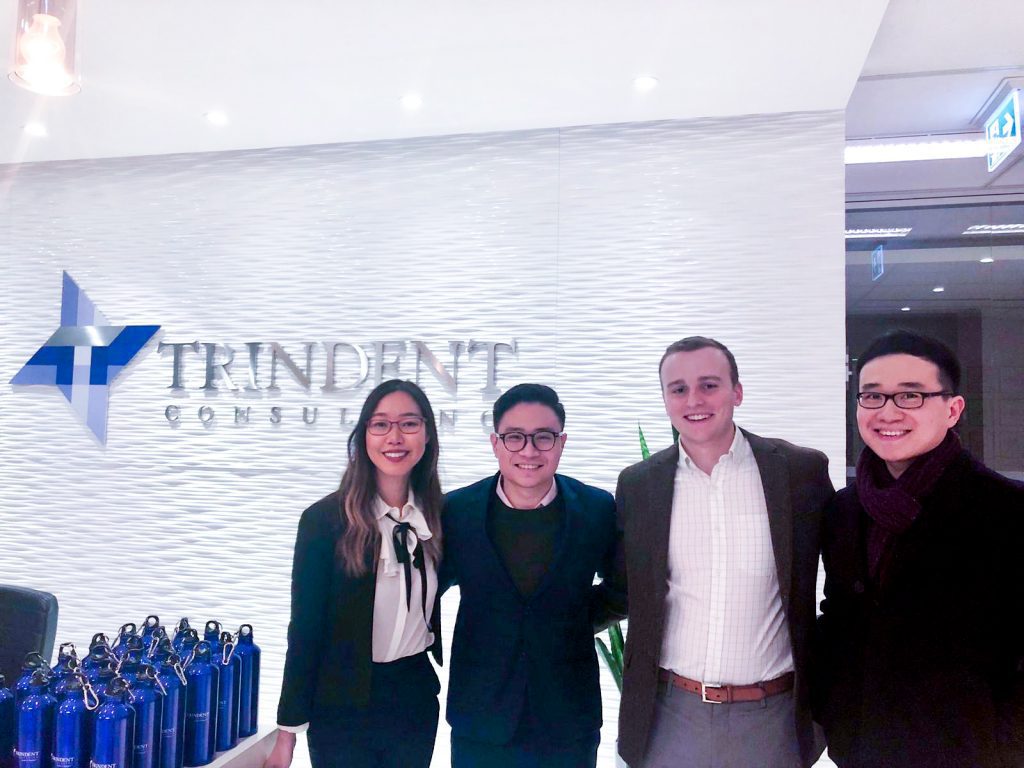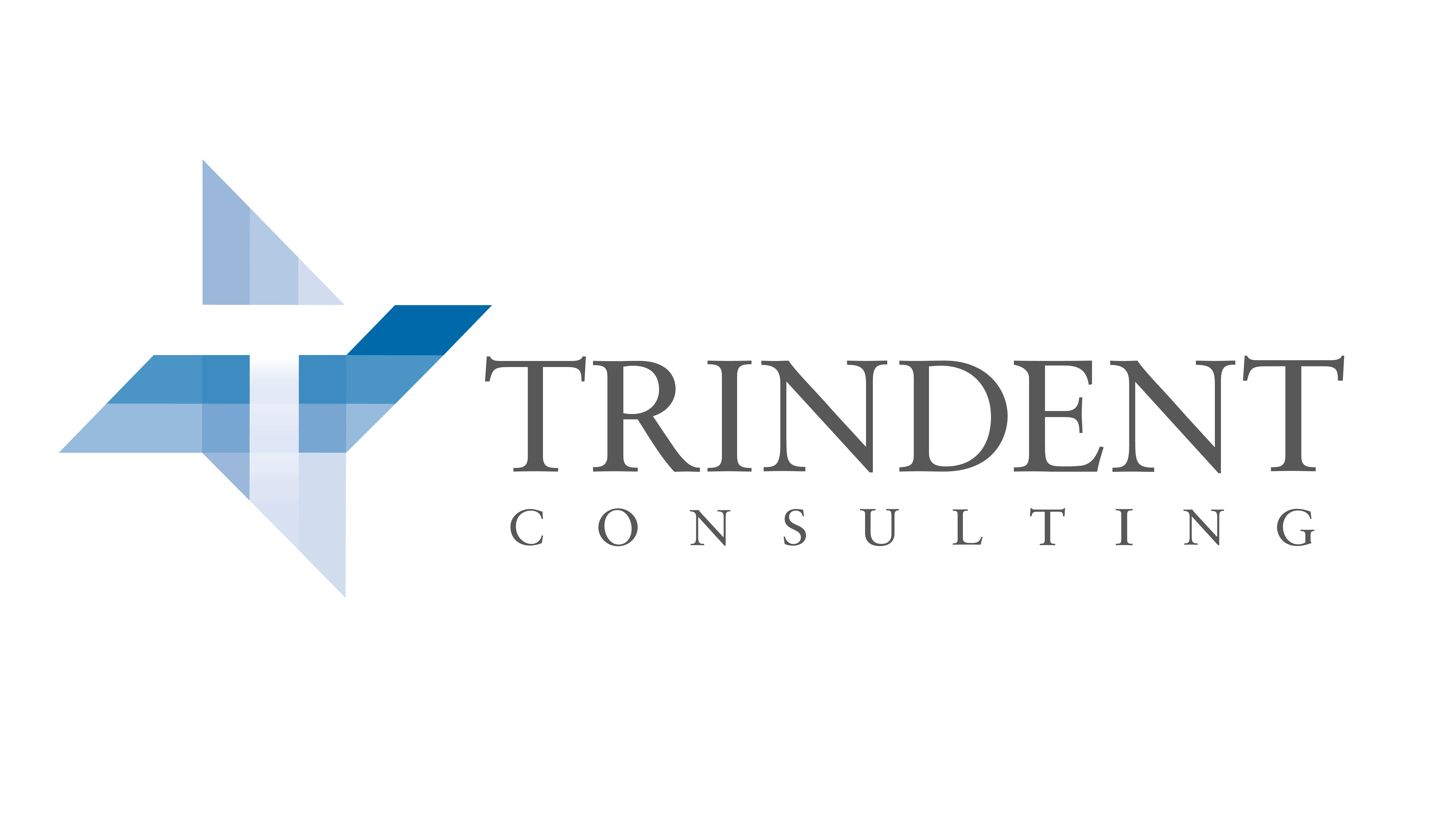So, You Think You Run A Tight Ship?
Lessons Learned From Being On Both Sides Of The Table

During
a particularly memorable session with Jack Welch during my MBA days, someone
from the audience asked his opinion on the consulting industry. His muttered answer was brief: “Get a real
job”.
As
my consulting career began, that episode lived in my mind, and I remember
wondering, “Is asking for external help not equal to admitting your own
ineptitude? Isn’t an executive better
versed in their own business realities than any outsider might be?” But as my professional journey took me through
various consulting and management roles, I’m glad to report the answers are; “It’s
not” and “Not always”.
When I entered consulting, I was lucky to join a practice that specialized in result-oriented implementation and structured analytics, where the observable impact on the organizations we worked with erased any doubt about how effective our work was. It wasn’t just the application of lean management principles, or the structured and disciplined approach to analyzing and changing processes, systems, and behaviors. What truly drove the value we added was working side by side with our clients, co-owning the changes, and arriving at long-term sustainability rooted in the new improved state we left behind us.
But
it was only when I left consulting to take on a management role, that I was
able to fully appreciate the value provided by business
management consultants. While
formally working under the title of General Manager at a healthcare company, I found
myself carrying out responsibilities at a COO level. I was given a challenging
and exciting project: To ensure that a solid
operational base was put in place to support the explosive growth of the
company. In my mind, no one was better
equipped to take this on than a former consultant who had extensively dealt
with operations across various industries.
Years
later, sitting at my desk, satisfied with the work I’ve done, looking at KPIs and results
that were on track to meet aggressive targets, a realization struck me: “If I invited my consultant-self to look at
the structure which my management-self had built, it would take consultant-me
no time to paint red (the equivalent of non-value-added in the implementation
consulting world) all over it!” The
realization was stunning. Did this mean
that as a consultant I had taught my clients principles which I was unable to
implement when in a management role?
However,
I realized that I had, in fact, implemented those principles. I had even managed to create an internal
consulting team for the project (which eventually proved to be a futile exercise,
but showed that I had not lost sight of implementation fundamentals). So why were my work results not ideal by my
own standards?
The answer turned out to be a simple one: Because I had a business to run, and so I couldn’t truly concentrate on improving it at the same time. In order to take the company to that next level of excellence, I would need more resources than I had at my disposal; non-financial resources, additional expertise, added talent, a fresh insight, and, most important, more time. I needed the help of a consultant-me.
I returned
to being a consultant shortly after that, and have recently joined Trindent Consulting.
I now work with outstanding colleagues who practice the values and approaches I learned to appreciate through my time in
management.
And if there is one valuable piece of advice I can pass along to operational leaders, it’s this: If you think you’re running a tight ship, contact us so we can show you – and work with you to fix – the “red” in your operation. I know for a fact that you will be glad you did.
The author of this blog Arthur Buduryan is an Engagement Manager at Trindent Consulting
Management Concepts For The New Normal
By Trindent Consulting Staff

The COVID-19 pandemic has created an unprecedented test for the business world. Very few organizations had contingency plans for situations like this, and most had to scramble to adjust to an entirely new way of running operations, often on just a few days’ notice. New realities like having all staff work from home had never been imagined, much less planned for. As companies raced to transition to this “new normal” plans had to be formulated – and course-corrected – in real-time by management.
As unfortunate as current circumstances are, this is
ultimately a test that will serve to demonstrate which companies are agile
enough to adapt, which are not, and which will emerge stronger than ever. One of the main determining factors of how
companies will come out of the pandemic is how an organization’s management
team led their staff.
The Digital Productivity Gap
The digital age changed how organizations and people interact with one another and today, it allows companies to continue functioning remotely through what has become a prolonged work-from-home mandate. While remote work has its advantages, there are reasons why this option is allowed with caution under regular circumstances. There are obvious pitfalls that companies were not equipped to face, the biggest one being a gap in the ability to remotely manage teams in an effective manner.
Trindent believes that “the most effective way for managers and business leaders to successfully bridge the gap between great strategy and effective performance” is with active management. With entire organizations forced to work remotely, active management is more important than ever as leaders struggle to address the work-from-home productivity gap.
Effective Remote Management
Active management is the key to effectively overseeing a remote workforce. Passive managers will leave their teams with insufficient guidance and oversight, increasing the risk of productivity gaps; and micromanaging a team remotely is simply unrealistic and untenable.
In our engagements, Trindent always includes active
management training modules for organization leaders. By using these modules, our clients have
successfully increased and sustained productivity, with a good adoption rate
and good response to an uptick in active management. This was particularly true for clients who
had remote staff.
Mitigating Risk
Now that remote work is the new normal, there are three threats
that active leaders need to keep top of mind:
- Communication
will continue to be more challenging as the convenience of walking to each
other’s desk is gone - Teamwork
will increasingly feel like autonomous work as inter-colleague interaction shrinks - Recognition
will diminish as there is less contact and work feels siloed.
If managers can successfully mitigate these risks, their teams
will stay engaged and productive, and they will succeed in this new normal.
The Trindent methodology on active management is built to be adaptable to challenges like the one we are now facing. Organizations who can turn this challenge into an opportunity and improve how their leaders manage a remote workforce will be the ones that will get ahead.
Working at Trindent: A Year in Review - 20/30/40

It is at the one-year mark of my
career launch with Trindent that I write this article intended to share how the
year has brought extensive learning, personal growth, and an abundance of
opportunity. Giving context to the magnitude of learning, growth, and
opportunity experienced over the past year; I have spent a day in the life of
20+ different client roles across 2 industries, traveled to 30+ cities spanning
3 countries, and worked directly with more than 40+ of the Trindent staff. By
this point, I hope it can be inferred that beginning my career as a consultant
at Trindent has changed my life.
Learning New Skills
Elaborating on the first measurement - spending a day in the life of 20 client roles - this experience came in the form of ‘process observations’ which is where consultant sits with one of the client’s employees for the entirety of their workday, building an understanding of the current process and looking for improvement opportunities. Aside from learning that some warehousing facilities are so large, they could encapsulate small Canadian towns, or that there are medical devices smaller than your baby finger that will cost more than your car (at least my car), these process observations help consultants learn how to identify what is adding value. This skill has proven exceptionally valuable, allowing one to highlight exactly where the pain points are, quantify them, and build the case for change.
The Perks of Consulting Life
The second tangible measure of my experience with Trindent – traveling to 30 cities within one year – has been both challenging and unbelievably rewarding. The commute of a consultant is very different from most jobs, where it often starts Sunday evening (or Monday morning), involves a few flights, and returns you back home the following Thursday evening. Needless to say, the hustle-bustle of airports, the ever-present risk of unpredictable travel complications, and most importantly, the limited time with loved ones, all represent serious challenges in the life of a consultant. That being said, the exposure to different cultures, food, and people over the past 52 weeks has offered unparalleled personal growth. On a few occasions, I was fortunately permitted to share the benefits of work-related travel with my significant other and bring her to destinations such as New York City and California (where I was working at the time), a perk that Trindent encourages to help offset the challenges extensive travel may pose to one’s personal life.
The Trindent Team
The final metric that describes my time at Trindent – direct work with 40+ consultants – once again offered both challenges and benefits. It quickly became apparent that consulting is a fast-paced industry where people are constantly changing roles, project assignments, and moving on to other careers. These personnel changes are often a tough adjustment, a reality bound to surface on any team, and one that can be addressed by openness with colleagues, a growth mindset in how you add value, and a willingness to pay it forward when training those who join after you. Despite this challenge of change, the experience has offered an invaluable silver lining; the privilege of working with 40+ people who are unanimously knowledgeable, personable, and engaging.
Click here to learn more about opportunities at Trindent Consulting
The blog's author Andrew Lauzon is a Senior Consultant at Trindent.
The Silver Lining to Working From Home

With the COVID-19 outbreak, most offices across the globe are left unoccupied as workers flee to their work from home spaces and begin working remotely for an unknown amount of time. Fortunately, a lot of corporate services are well equipped to run remotely, with conference calls, work video calls, and touchpoints able to continue as normal. However, there are many aspects of the regular office space that the coming months will change (maybe for the better) including your schedule, your social life, your commute, and even how you drink your morning coffee.
1. Use your new schedule to your advantage
Although it is recommended to maintain your regular schedule while working from home by beginning at 9 am, ending work at 5 pm and taking an hour's lunch in between, there are certain changes that will come to your daily schedule while working from home, that are far from bad. Some of these changes include the sleep that you gain back from not having to commute, as well as the time you get back from skipping the socializing at the office coffee machine.
2. Learn New Productivity & Time Management Skills
Over the next weeks of working from home, this will be the time to stop and learn how to build productivity and time management skills, rather than letting your current working habits slide with your flexible work schedule. During this time, as a consultant, I am taking time to complete my Lean Six Sigma Course, while my co-workers are working through Project Management courses and self-taught VBA for Excel and Tableau in order to bring new skills to the client site in the future.
3. Find a new substitute for your morning commute
As a consultant based in Toronto, I have had my share of both commuting to Toronto from Hamilton (over an hour each way) as well as flying out on Sundays to the client site. While working from home, I have found more time without my commute to start work earlier, eat breakfast, get to my dinner on time, get my workout in or even finish my personal administrative work and house cleaning. Although many employees enjoy the routine of their morning commute, take this opportunity while working from home to use the time from your commute to catch up on your personal to-do list or build new healthy habits. Some items that I have been working on include my personal budgeting and accounting templates as well as cleaning up my work laptop to be organized and ready for a busy season in the future.
4. Reconnect with forgotten friends
It is obvious that social distancing will have a negative impact on our social lives in the upcoming weeks. While employees are told to stay home from social gatherings, the office dynamic that lacks while working at home is one that most will miss. However, while your work social life will lack for the next weeks, working from home presents the opportunity to catch up with old friends that you have not connected within a long time. At no other point in our lives, will everyone in the world be confined to their living space simultaneously, battling the same enemy? To make up for a loss of social interactions from work, take time to FaceTime old college roommates over your cup of coffee, distant family members and your friends that you met on last year's vacation. Take time from your work relationships and uncover some of the relationships that you have missed for so long.
5. Enjoy your morning coffee
Whether it’s Starbucks or Tim Horton’s, most people fall victim to grabbing a morning coffee either on their way to work or throughout the day with co-workers. With most coffee shops closing for the upcoming weeks, it is a great opportunity to realize the benefits of waking up in the morning, making your coffee yourself and enjoying it before you start your day. This new trick can prepare you to practice better choices when you go back into the office later on. It is amazing the cost savings from not spending money on coffee every morning that you may realize as well as the time you get back by not having to make an extra stop on your way to the office. If you love the taste of your brewer, you can even pick up Tim Horton’s or Starbuck’s ground coffee to keep yourself in your normal routine at a fraction of the cost. This might also be the time to indulge in healthy eating habits such as making and eating breakfast as well as bringing lunch to the client site, rather than buying lunch due to convenience.
This blog's author Lauren Soave is a consultant at Trindent Consulting
Using KPIs to Optimize the “Psychological Contract”
The concept of the “Psychological Contract” is a set
of unwritten promises and expectations between employer and employee that form
a basis for every employment relationship.
More precisely, it’s a “deal” from “the perception of the two parties…of
what their mutual obligations are towards each other”.
For an employee, their core obligation is to deliver on assigned outcomes. For an employer, it’s to provide feedback and give performance evaluations designed to guide employees to succeed. The effectiveness of that feedback is determined by an employer’s ability to measure whether an employee can deliver against set expectations.
But for many organizations, there’s a missing link in the process because they lack real visibility to how the KPIs of employee performance are tracking. Without having necessary data and facts, employers are left interpreting performance rather than judging it objectively, leading to subjective, often unhelpful, feedback and a disruption to the Psychological Contract.
The Missing Link:
Dashboards and KPIs
All organizations have some form of outcome targets
for their employees, but how progress is tracked against those targets can make
a substantial difference in how accurately employee performance is managed. This in turn impacts how successful an
employee can become, and by extension, how productive their whole department is.
The necessary tool to achieve this real time insight
is a robust dashboard to display the main KPIs at both an individual and team
level. When KPIs come alive on a dashboard, they
become a tangible and a real-time guide for employers to let their employees
know how they are performing, what they are doing well, and where they need to
improve.
With the ability to measure and visualize these KPIs, leaders can coach and boost productivity both at an individual and team level, and keep employees motivated, goal oriented, and most importantly accountable. It is often in the coaching/conversation that come from dashboard reviews that employees understand what is required of them in order to meet their obligations.
Fill the Gap to Optimize the Contract
As Peter Drucker said, “if you can’t measure it, you can’t improve it.”
Organizations need to have tools in place so they can be aware of production metrics. A wealth of data is most likely available to any manager, but the goal is to be able to utilize that date in a way that makes it consumable. Only when this is accomplished and KPIs are available in real time can the missing link in the Psychological Contract be found, one that allows employees to take ownership of their performance and leaders to aim for improvements.
Prototyping Change – How to Succeed Even When You Fail

Since 2008, Trindent Consulting has delivered millions of dollars in process improvement results to clients in the Energy, Healthcare and Financial Services verticals. With every engagement, Trindent has a blueprint built on past successes to effectively analyze client issues and quickly come up with a list of operational challenges our team needs to tackle.
However, while problems tend to be fairly standard, they rarely have a one-size-fits-all solution. All clients have a unique set of circumstances that need to be built into any proposed action, which is why Trindent customizes their method change solutions to each of our clients.
A key part of the process of designing solutions is ensuring
that they are the best ones to achieve the benefits clients are looking for. This is why Trindent employs the prototype
approach to sample each method change solution we propose before rolling them
out across an entire organization.
What is Prototyping?
Prototyping is used to evaluate the design of a proposed solution in order to test its viability and scalability. Simply put, prototyping involves testing the full solution on a small scale – for example, rolling out a process change within one small area of one department, rather than across an entire organization. This allows for the hypothesis of a solution to be tested, and its constraints and limits to be observed with minimal risk to the overall operation of the business.
In essence, prototyping is a failsafe. It mitigates the risk of implementing an
approach across an organization that’s not guaranteed to bring intended results,
which can be costly in time and resources and poses both an operational and
reputational risk to the company.
What Happens When the Prototype Fails?
Before a prototype is launched, metrics are put in place to
define whether its test will be considered successful. If the metrics aren’t achieved, then the
proposed solution didn’t produce the indented results, and the prototype test is
considered a failure.
But a failed prototype test and the data collected from it aren’t
waste. The outcome of the test will be
analyzed to see where it fell short, so that adjustments can be made, and a
revised and more effective method change solution proposed. In this regard, a prototype failure becomes
part of our path to success.
What Happens When the Prototype Cannot Be Salvaged?
One of Trindent’s values is perfection with urgency, and on
client engagements, our consultants work to rapidly identify, design, and
recommend changes.
However, sometimes, despite best efforts, there’s no path for
the prototype to achieve desired results and a decision has to be made to
abandon it. In these rare cases, the
engagement team quickly returns to the drawing board to refocus the
problem-solving process, using the data from the failed test to steer them towards
a better solution.
When this happens, the advantages of the prototype approach are
apparent. The “fail fast” methodology of
prototyping allowed us to quickly explore a certain avenue, find out swiftly and
with minimal impact that it doesn’t work, and then rapidly pivot to exploring a
different solution.
Succeeding When You Fail
Henry Ford said, “Failure is the opportunity to begin again,
only this time more wisely.”
Trindent uses the prototype approach to find success regardless of the outcome of the test. If the prototyping is successful and the optimal method change solution has been found and can be successfully implemented. But if the prototype fails, it becomes our opportunity to continue moving towards success, only more wisely. Click here to find out more about Trindent’s approach.
Six Sigma – Striving for the “Perfect” Process

Six Sigma methodology is based on a philosophy that strives
towards process perfection, using statistical techniques to measure and
quantify success.
The symbol for Six Sigma – 6σ
– is the statistical representation of a “perfect” process, but what does this
mean? A Six Sigma, or “perfect”, process
produces 99.99966% of all its deliverables without defects. In other words, it sees no more than 3.4
defects per million opportunities.
Sigma levels can also be seen as a way to show how far a
process or deliverable deviates from perfection. The closer you get to 6,
reducing process costs and increasing customer satisfaction along the way, the
closer you get to perfection.
To illustrate Six Sigma better, let’s look at the
improvement cycle and the statistical tools used in Six Sigma.

Six Sigma’s Improvement
Cycle – DMAIC
DMAIC (Define, Measure, Analyze, Improve and Control) is the
improvement cycle used to drive Six Sigma projects.
Using
the DMAIC framework, once a defect is located and defined, a measurement plan is put in
place to accumulate the necessary data to analyze the defect. Once the data is analyzed, the process in
question is adjusted to improve its functionality. And finally, when this process is fully
corrected, the improvements are institutionalized to become the new
standard in the process — establishing control.
Although customarily used as a part of Six Sigma, DMAIC is
not exclusive to the methodology and it can be used as the framework for other
improvement applications

Statistically – What is Six
Sigma?
Rooted in statistics, Six
Sigma improvement makes use of standard deviations to display the statistical data
of a particular process. This method uses a formula to measure a process’
potential, effectiveness and likelihood of straying away from perfection –
shown as yield.
| Yield % |
Sigma Level |
| 99.6540 | 4.2 |
| 99.5340 | 4.1 |
| 99.3790 | 4.0 |
As an example, Company A produces 150,000 items a month, 750 of which have defects. The Yield is 99.5% [(150,000 – 750)/150,000 x 100], which is about 4.1 sigma on the abridged Sigma table.
Following
“The Normal (Distribution) Curve” to visualize these calculations, Sigma levels
provide a relative value for components in the process to determine where to
focus efforts to improve the overall operation.
It’s worth noting, the
relative values should not be the sole driver in improvement effort decisions, as they do not
include cost, timeline, or value of that change to the customer.
Perfection with Urgency
The use of Six Sigma, like Lean management or any process improvement methodology, depends on an organization’s goal.
At Trindent, we understand that one size doesn’t fit all. Our methodology is based on Lean and Six Sigma but recognizes the considerable part people play in driving process improvement to a successful outcome. The Trindent approach incorporates Lean and Six Sigma methods into a comprehensive set of tools that focus on practical ways to improve processes, systems, and behaviors with an existing infrastructure.
Process. System. Behaviour.
Outdated Process Series
Every process in an organization should be designed to either add value or to be a necessary part of an activity that adds value; and any process that does neither of these should be changed or eliminated. Previous articles in this series discussed the challenges of identifying outdated and inefficient processes, and looked at observation as a tool for driving business process improvement. This article will discuss why observing a process in isolation isn’t sufficient to fully understand whether it can or should be changed to drive value.
Each process in an organization generally has a management operating system governing it and the behavior of its participants driving with it. When a process is observed without taking these two components into consideration, the ultimate analysis can only offer a limited view on any of its inefficiencies and shortcomings. To truly understand the capacity for improvement, we need to use a systematic approach to look at all three elements together.
Management Operating Systems
In order to measure and manage a process, management
operating systems are put in place to track key process performance indicators,
measure process results, and generate performance data, among other functions. Observing a process cannot be effective if
it’s done independent of whatever management operating system is behind it, and
if the data the system generates isn’t optimal.
When it comes to data, more is not always better, and can, in fact, be worse; and this is a good place to start when determining whether a system is helping or hindering process efficiency. The ideal type and quantity of data will cover all necessary metrics related value creation without clouding the analysis with unnecessary information that doesn’t drive insight. Often, organizations mistake collecting a high volume of data for collecting the right data, and end up with an inaccurate understanding of their process productivity and effectiveness.
Process improvements can often by driven by simply
improving the quality and/or quantity of the process related information being
tracked, reported or analyzed by the management operating system.
Behaviours
Even the most masterfully crafted process can fail if
the appropriate behaviour of its participants is not in place. Conversely, a poorly designed process may be kept
afloat by talented and dedicated staff. When
observing a process, it’s necessary to pay attention to the behaviour within
and around it, and how that behaviour affects its effectiveness in order to
truly understand where and how the process needs to be improved.
When observing behaviour, it’s important to start by
analyzing whether managers have clearly communicated their expectation to their
team and set appropriate targets. It’s
also necessary to look at whether process participants were adequately trained
and equipped, and whether they were given access to the correct system elements
in order to be able to optimally participate in the process.
Usually, when aspects of behaviour don’t match best practices, the failure doesn’t stem from workers’ poor intentions. More often then not, when they receive clear instructions and are appropriately trained and equipped, correct behaviours can quickly be implemented to drive process improvements and yield maximum value.
Conclusion:
To truly assess process effectiveness, it’s essential to
look beyond the structure and qualities of the process itself, to evaluate its management
operating system and the behaviours of its participants. In taking this holistic approach, the
operational shortfalls that need to be addressed will become clear.
To learn more about the approach Trindent uses to identify and correct outdated processes, contact us.
Implementing Method Change: Manager Behaviour
In an ideal world, organizational method change
is always embraced and its role in helping companies to stay relevant and
competitive is recognized. However, in
reality, change is not always welcomed.
There are a number of variables that affect the success of change
adoption; one the biggest is manager behaviour and willingness to lead their
teams through process and system changes.
Method change is always part of Trindent’s engagements but once a method change is outlined by our team, it requires the collaboration of both managers and employees to be successfully implemented. While resistance to change from employees is an anticipated challenge, it is the responsibility of their managers to lead them through the adjustment.
Leading from The Front
If the managers in your organization don’t believe in the method changes, neither will their teams. It’s important that trust in change starts from the top and makes it way down to the frontlines, so managers must lead by example.
What can executives and project sponsors do
to ensure manager buy-in? Coaching
managers to overcome their resistance is a good start. But it’s also important that managers are
given a chance to provide input during the planning and design phase of the change,
and that their suggestions be incorporated when possible. After all, they will inherit the new method
being put in place and will be tasked with leading their teams to accept and
embrace it. Giving managers a chance to
have this input allows them to have ownership of the initiative and lets them
feel invested in its success.
If managers can project a positive attitude
and enthusiasm throughout the implementation of a method change prototype through
to its full execution, it will inevitably lower employee resistance and drive
their engagement and buy-in.
Breaking Down Employee Barriers
The phenomenon of employee resistance to change is more complex than it appears on the surface. At the root of resistance is fear of the unknown and fear of failure. It’s easy to discuss theoretical mockups and designs of new processes and systems and the positive impact they will have. But it’s important to remember that these changes have the potential to greatly transform the daily life of employees – they will be ones who have to bear the brunt of the new and unknown. The greater the potential impact of the changes on an employee, the greater their resistance may become, especially if their current environment is comfortable and stable.
Therefore, it’s important that managers not
only have a positive attitude towards the method change, but that they take
seriously their responsibility to lead employees through it. They have to communicate to their staff their
vision for successful change and outline a clear path of how the team will get
there together.
Change is a vague term, but by demystifying
its components, managers can reassure staff. Managers have to remember that employees want
to feel reassured that the future state will be better than the current state
and that they will be supported through the process. Employees should feel that their managers are
going through the lifecycle of the change with them and feel that there is open
communication and a chance for input and feedback.
Conclusion
For change to successfully occur, the onus
falls on managers to lead their staff through it. It’s the responsibility of managers to break
the barrier of fear and to assure their staff that changes will be made
systematically to facilitate better outcomes.
It takes leadership to effectively manage
expectation and facilitate a transition from current to future state. Before
searching for other factors that contribute to successful change management, it’s
important to understand that trust in change starts from the top.
Click here to learn
more about Trindent’s approach to active management.
Using Game Theory to Hire the Right Candidate

All organizations are on a constant lookout for quality candidates to join their team. Talent acquisition is a time-consuming undertaking, and frequently a time-sensitive one. To succeed in finding the right people, recruitment managers need to have a robust methodology to find quality candidates within the talent pool they have access to. At Trindent, we add our company values to that methodology to help guide our candidate selection process.
Most companies have a set of values that represent their vision and culture. One of Trindent’s values, Character before Skill, is a short but powerful phrase to remember when looking to hire the right candidate. For Trindent, this value comes from the view that skills can be taught, but the character is a nearly impossible variable to correct; and character is the defining factor in successfully seeing a project through.
Today’s job market is saturated with
qualified candidates. Once a job posting
goes live, there’s a large volume of options to sort through, and the challenge
becomes to pick the right candidates from a pile of resumes with similar
skillsets. This is where company values
can become key, and a simplified version of game theory can assist with the decision-making process.
Using Game Theory to Hire Right
In economics, “game
theory is the process of modeling the strategic interaction between two or
more players in a situation containing set rules and outcomes”.
To visualize this theory in a recruiting context, imagine the very simple scenario of a two by two matrix. The categories are character and skill, and the options are some combination of “either they have it or they don’t”.

There are 4 possible outcomes, but the decision
comes down to 2 options if the following process of elimination is used:
- Option 4 is a poor candidate
that should be removed from the decision right at the beginning. - Option 1 is the ideal candidate
and should always be the one selected. If
this candidate can be found, the decision tree should end here. - If selecting Option 1 isn’t
possible, then the decision process moves on to Options 2 and 3.
And that last step is where company values
come into play. Both options are missing
a component but in the context of Trindent’s value of Character before Skill,
Option 2 becomes the only desired option of the two options left.
Play the Long Game
Integrating company values into the recruitment process will yield quality candidates who will become key to the financial success of an organization. The reputation of a firm is one of its greatest assets, and it’s, therefore, a solid long-term strategy to invest in candidates with character traits that will represent your brand proudly.
Trindent has been named as one of GROWTH 500's “Canada’s Fastest-Growing Companies” for seven consecutive years, a true testament of its success in hiring the right people.




